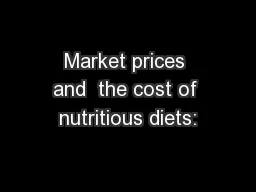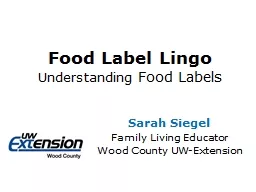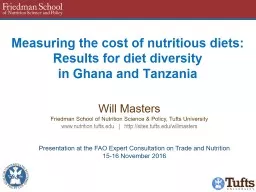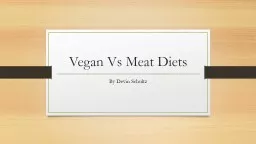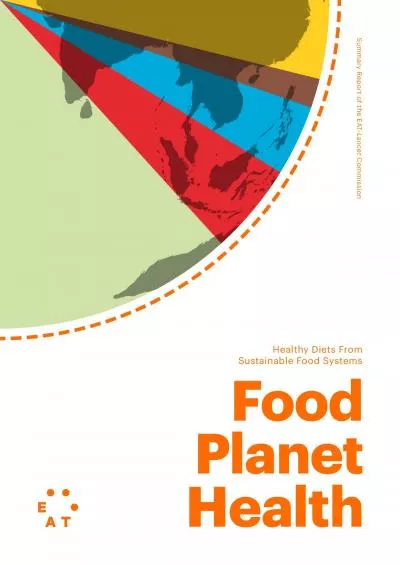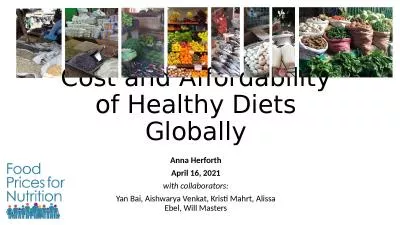PPT-Market prices and the cost of nutritious diets:
Author : tatiana-dople | Published Date : 2018-11-08
New price indexes to measure food system change Will Masters amp Robel Alemu Friedman School of Nutrition and Department of Economics Tufts University Advancing
Presentation Embed Code
Download Presentation
Download Presentation The PPT/PDF document "Market prices and the cost of nutritiou..." is the property of its rightful owner. Permission is granted to download and print the materials on this website for personal, non-commercial use only, and to display it on your personal computer provided you do not modify the materials and that you retain all copyright notices contained in the materials. By downloading content from our website, you accept the terms of this agreement.
Market prices and the cost of nutritious diets:: Transcript
Download Rules Of Document
"Market prices and the cost of nutritious diets:"The content belongs to its owner. You may download and print it for personal use, without modification, and keep all copyright notices. By downloading, you agree to these terms.
Related Documents

